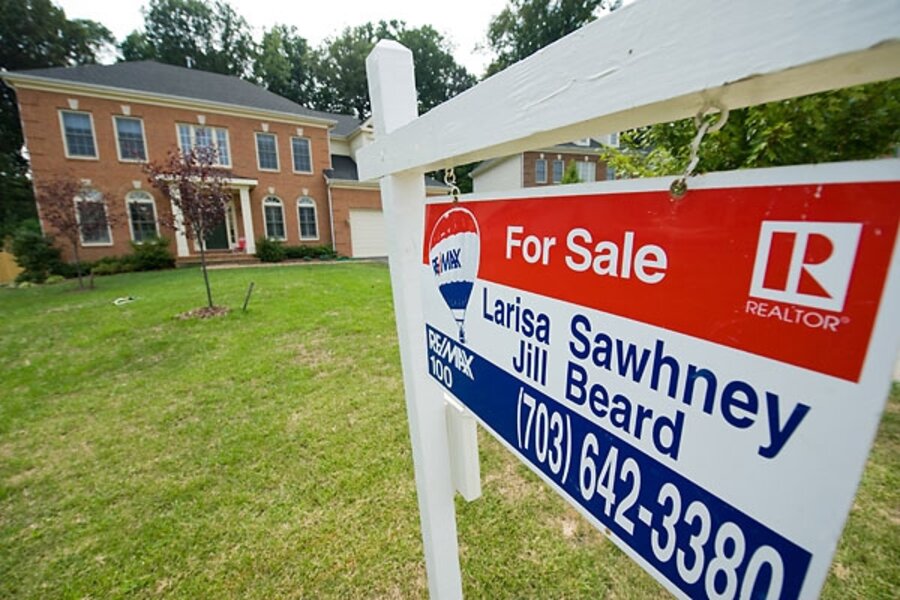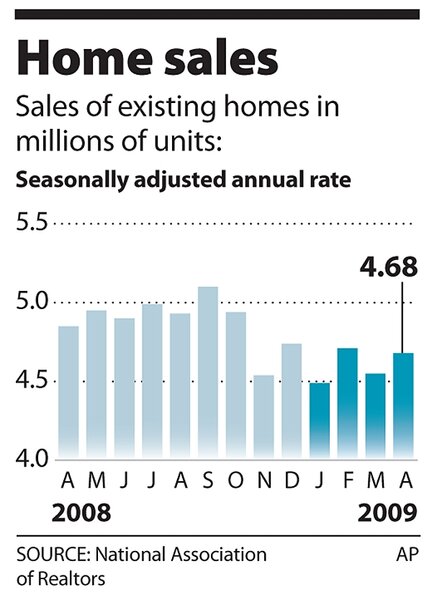Home prices keep falling, but sales revive as buyers bargain shop
Loading...
| New York
In April, Americans continued to bargain hunt for houses, a trend that is helping to move properties.
In the latest evidence that lower prices are attracting buyers, the National Association of Realtors (NAR) reported Wednesday that existing home sales rose 2.9 percent compared with March.
But housing prices are still falling, dropping 15.4 percent from last April. And, housing inventory continues to swell as anxious sellers – including banks – list more houses for sale.
“What we are seeing is some stabilization here,” says Bob Brusca, an economist with Fact & Opinion Economics, a consulting firm in New York.
Spring's monthly housing numbers are important because they come at a time when many people start to think about listing their homes for sale, especially if they will be moving to a different city or neighborhood. If sales are rising, it can give sellers more confidence. But if prices are falling, it might also tell them their net worth is dropping.
“If people feel their house is falling in value, they may think, ‘I have to save more,’ ” says Stuart Hoffman, chief economist at PNC Financial Services in Pittsburgh. “And that is what is going on: People are holding back on spending.”
Still, the sales numbers were somewhat improved. In April, existing single-family homes, town homes, condos, and co-ops sold at a seasonally adjusted annual rate of 4.68 million units, up from a revised rate of 4.55 million units in March. This rate has pretty much held steady through the first quarter of the year.
The stability may be a sign that the housing market, at least as far as sales are concerned, is bottoming out, says Mr. Hoffman. “Green shoots are not defined as going up, but in not going down,” he says. “But that’s not happening on the price side.”
The national median price for all types of existing homes was $170,200, down 15.4 percent from a year ago, according to NAR. However, distressed sales such as foreclosures, which represented 45 percent of all sales, continue to distort prices.
In most parts of the country, first-time buyers are dominating real estate sales. That’s the case in North Texas, reports Dee Dee Trosclair, regional director at Keller Williams Realty in Dallas.
“Prices are down from last year and our builders are offering incentives to clear out their inventory,” says Ms. Trosclair. “In Plano, for example, one developer selling homes in the $390,000 price range, dropped prices by $100,000 to get rid of existing inventory.”
But, she adds, bargains are not everywhere. In suburban Flower Mound, there are some homes with multiple bids on them. “There are some parts of town where the inventory is just not that robust.”
The NAR home price information was somewhat better than Standard & Poors/Case-Shiller’s, which on Tuesday reported that their quarterly national index fell 19 percent in the first three months of this year. On a year-on-year basis, prices dropped in all of the 20 cities that Case-Shiller measures. In nine of the cities, the drop was 20 percent or more.
Since their peak in 2006, housing prices are down 33 percent, according to Case-Shiller. But they remain up 20 percent from 2000.
The message from the Case-Shiller numbers is that “prices are dropping nationally at high rates, that they are dropping nearly everywhere, and will likely continue to drop,” writes Patrick Newport, chief economist at IHS/Global Insight in an analysis.
PNC’s Hoffman expects the rate of decline of home prices to begin slowing from the high teens to 8 to 9 percent by year-end. “I don’t think we would call that stability; we would just say it’s not falling as rapidly.”
According to NAR’s April numbers, the housing inventory grew from a 9.6-month supply in March to a 10.2-month supply in April. The inventory over the past few months has remained lower than it was a year ago, noted NAR chief economist Lawrence Yun, in a statement.
However, Hoffman says, it appears that the slight improvement in sales has prompted more people to list their homes. “It’s almost like if you sell a few more, it brings out many more sellers,” he says.
NAR reports a rise in existing-home sales in almost every region of the US except the Midwest, where sales fell 2 percent compared with March. The best market, in terms of sales, was the Northeast, where sales increased a solid 11.6 percent while prices fell only 9.6 percent compared with a year ago.
In the West, where there are many foreclosures, sales rose 3.5 percent. But prices, reflecting the distress sales, fell 21.8 percent from April 2008 levels.






